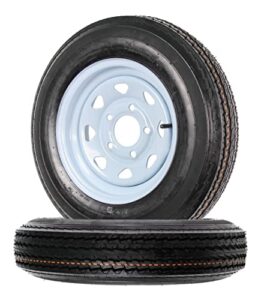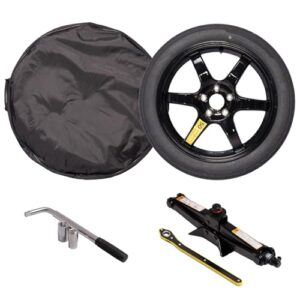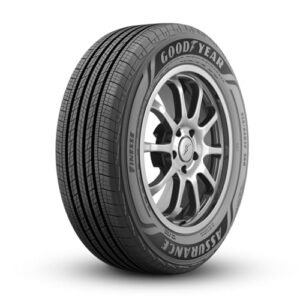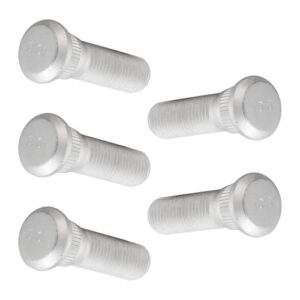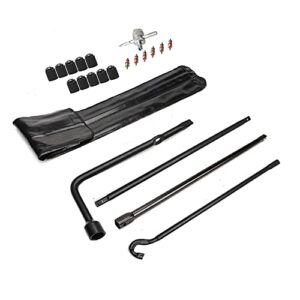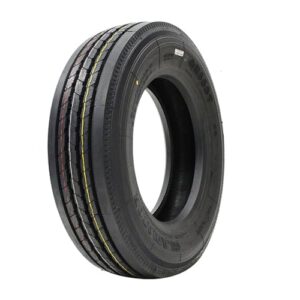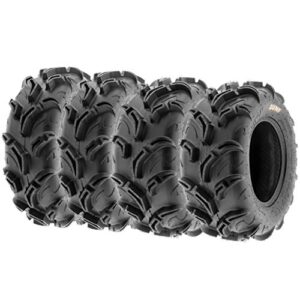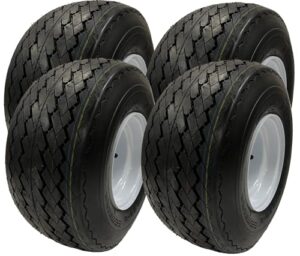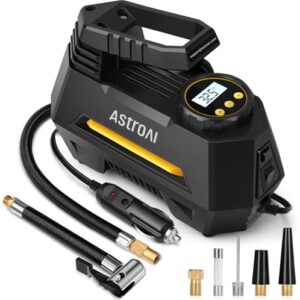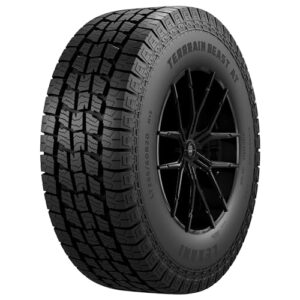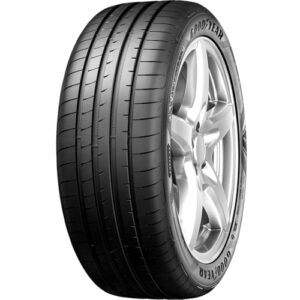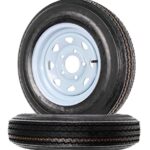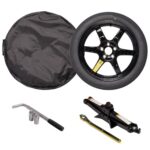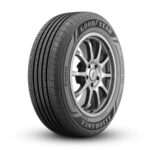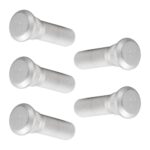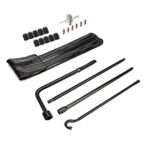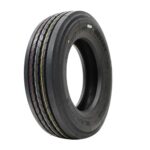Run-flat tires can drive even after a puncture. But are they worth it?
Understanding the pros and cons of run-flat tires can help you decide if they are right for you. Run-flat tires have been around for a while now. They promise peace of mind, letting you drive to safety even with a flat.
Yet, there are trade-offs to consider. Some drivers swear by them, while others prefer traditional tires. Knowing the benefits and drawbacks can help you make an informed choice. In this blog post, we will explore what makes run-flat tires unique, their advantages, and their potential downsides. This knowledge will help you decide if run-flat tires fit your needs and driving habits.

Introduction To Run-flat Tires
Run-flat tires allow you to keep driving after a puncture. Pros include added safety and convenience. Cons involve a stiffer ride and higher cost.
Run-flat tires are becoming more popular among car owners. They promise convenience and safety. But are they right for everyone? Let’s dive into what run-flat tires are, their history, and their development.
What Are Run-flat Tires?
Run-flat tires are special tires that can keep moving even after a puncture. They allow you to drive for a short distance. This gives you time to reach a repair shop. They have reinforced sidewalls that support the tire even without air pressure.
History And Development
Run-flat tires were first used in military vehicles. Later, they appeared in luxury cars. Now, many car manufacturers offer them as an option. Over the years, technology has improved. Modern run-flat tires provide better comfort and performance. They can handle different road conditions and speeds.
Benefits Of Run-flat Tires
Run-flat tires are becoming popular among drivers for many reasons. They offer several benefits that make driving safer and more convenient. Let’s explore the key benefits of run-flat tires.
Enhanced Safety
One of the most significant benefits of run-flat tires is increased safety. These tires allow you to continue driving even after a puncture. This reduces the risk of accidents on busy roads.
Traditional tires can lead to sudden blowouts. This can be dangerous, especially at high speeds. Run-flat tires prevent this by maintaining their shape after damage.
You can drive up to 50 miles at reduced speeds with a run-flat tire. This gives you enough time to reach a safe location or a repair shop.
Convenience Factor
Run-flat tires offer a high level of convenience. You don’t need to change a flat tire immediately. This can be a lifesaver in bad weather or unsafe areas.
Run-flat tires eliminate the need to carry a spare tire. This frees up space in your vehicle for other items. It also reduces the overall weight of your car.
Many modern cars come with run-flat tires as standard. This shows their growing popularity and convenience.
Improved Stability
Run-flat tires provide improved stability for your vehicle. They are designed with reinforced sidewalls. This helps the tire maintain its shape, even when deflated.
Improved stability means better handling of your car, especially during emergencies. You can control your vehicle more effectively if a tire punctures while driving.
This stability also improves the overall driving experience. Your car feels more balanced and secure on the road.
Limitations Of Run-flat Tires
Run-flat tires have many benefits. But they also come with some limitations. Understanding these downsides is crucial before making a decision. Below, we explore the key limitations of run-flat tires.
Higher Cost
One of the main drawbacks of run-flat tires is their cost. These tires are generally more expensive than traditional tires. The higher price is due to advanced technology and materials. This cost can add up, especially if you need to replace all four tires.
Reduced Comfort
Run-flat tires often provide a stiffer ride. The stiffer sidewalls make the tires more durable. But this can lead to a less comfortable driving experience. The ride quality might feel rough, especially on uneven roads. For drivers who value comfort, this can be a significant downside.
Limited Repair Options
Repairing run-flat tires is not always possible. Many tire shops prefer to replace them instead of repairing. This is due to the complexity of these tires. Repairing them might not guarantee safety. This limitation means you may need to replace the tire entirely, increasing costs.
Performance Comparison
Run-flat tires allow you to drive even after a puncture, ensuring safety. They tend to be heavier, affecting fuel efficiency. They also provide a stiffer ride compared to regular tires.
When comparing run-flat tires to standard tires, performance is a key aspect. Each type of tire offers different benefits and drawbacks. Let’s explore how they stack up against each other.
Run-flat Vs. Standard Tires
Run-flat tires provide the advantage of driving even after a puncture. This feature offers peace of mind, especially on long trips. Standard tires, on the other hand, require immediate attention if punctured. Run-flat tires are often stiffer, which can affect ride comfort. Standard tires usually offer a smoother ride due to their flexible sidewalls. This difference in construction also impacts the handling of the vehicle. Run-flat tires can sometimes lead to a harsher ride.
Impact On Fuel Efficiency
The weight of run-flat tires can impact fuel efficiency. They are generally heavier than standard tires. This added weight can lead to increased fuel consumption. Standard tires are lighter, which can help in saving fuel. A lighter tire means less resistance and better fuel efficiency. It’s important to consider this if fuel economy is a priority. The difference might be small, but it adds up over time.
Run-flat Technology
Run-flat tires offer convenience by allowing you to drive even after a puncture. They can be expensive and provide a stiffer ride. Perfect for safety but may not suit every driver’s preference.
Run-flat technology is a feature in tires that allows them to function even after a puncture. This technology provides peace of mind and safety. You can drive a short distance to get help without changing the tire immediately.
How It Works
Run-flat tires have reinforced sidewalls. These sidewalls support the tire even when air pressure is low. This means the tire won’t collapse after a puncture. You can drive up to 50 miles at reduced speeds. This is enough distance to find a repair shop.
Types Of Run-flat Tires
There are two main types of run-flat tires. The first type is self-supporting tires. These have stiffer sidewalls to support the vehicle’s weight. The second type is auxiliary-supported tires. These use a ring inside the tire to carry the load. Both types aim to keep you moving after a puncture.

Maintenance And Care
Maintaining run-flat tires requires regular attention to ensure optimal performance. Proper care can extend the lifespan of these tires, saving money and enhancing safety. Understanding the maintenance needs of run-flat tires is essential for every car owner.
Proper Inspection
Regular inspection is key to maintaining run-flat tires. Check for visible damage such as cuts or punctures. Ensure the tire pressure is within the recommended range. Use a pressure gauge to get accurate readings. Inspect the tread depth to avoid driving on worn-out tires.
Here are some tips for proper inspection:
- Inspect tires monthly.
- Look for uneven wear patterns.
- Check the sidewalls for cracks.
- Ensure no objects are embedded in the tread.
Replacement Guidelines
Replacing run-flat tires follows specific guidelines. Always replace with the same type and size of tire. Mixing different types can affect the vehicle’s performance. Follow the manufacturer’s recommendations for replacement intervals.
Here are the main points to consider:
- Replace tires every 6 years or 45,000 miles, whichever comes first.
- Replace both tires on the same axle at the same time.
- Consult the vehicle’s manual for specific guidelines.
- Seek professional advice if unsure about tire compatibility.
Consumer Experiences
Run-flat tires are becoming popular among drivers. Many people have shared their thoughts about these tires. Below, we look at the real-world feedback and common issues faced by consumers.
Real-world Feedback
Many drivers appreciate the convenience of run-flat tires. They eliminate the need to change a tire on the road. This feature is especially valued in unsafe or remote locations.
According to several users, run-flat tires offer peace of mind. They allow drivers to continue driving even after a puncture. This benefit can be a lifesaver in emergencies.
However, some consumers note a difference in ride comfort. Run-flat tires can feel stiffer compared to regular tires. This is due to their reinforced sidewalls. Some users find the ride less smooth.
Overall, run-flat tires receive mixed reviews. While the safety aspect is praised, the comfort and cost are often debated.
Common Issues Faced
Run-flat tires come with some common issues. Firstly, they tend to be more expensive. The initial cost can be a deterrent for many buyers.
Secondly, availability can be a problem. Not all tire shops carry run-flat tires. This can make replacements more challenging.
Thirdly, repair options are limited. Many run-flat tires cannot be repaired after a puncture. This means they often need to be replaced entirely.
Lastly, performance in certain conditions can be a concern. Some users report reduced traction in wet or icy conditions. This can affect safety and driving experience.
In summary, while run-flat tires offer significant benefits, they also present several challenges. Consumers should weigh these pros and cons carefully.

Making The Right Choice
Choosing the right tires for your vehicle is crucial. It impacts your driving experience and safety. Run-flat tires offer unique benefits but also come with drawbacks. Understanding these can help you decide if they are the right choice for you.
When To Choose Run-flat Tires
Run-flat tires allow you to drive a short distance after a puncture. This can be a lifesaver in dangerous or remote areas. They let you get to a safe location or a repair shop without changing the tire on the spot.
These tires are suitable for drivers who travel long distances regularly. They also benefit those who drive in areas where roadside assistance may be delayed. Luxury vehicles often come with run-flat tires as standard because of the added safety.
Considerations For Different Drivers
Every driver has unique needs. Here are some considerations:
- Daily Commuters: Run-flat tires provide peace of mind during daily drives. You won’t have to worry about getting stranded on your way to work.
- Long-Distance Travelers: They are beneficial for long trips, especially if you often drive on highways where stopping can be dangerous.
- City Drivers: If you mostly drive in the city, consider the cost. Run-flat tires are often more expensive than regular tires. City drivers might not need the extra safety they offer.
- Performance Enthusiasts: Run-flat tires can be heavier and less flexible. This might affect the handling of high-performance vehicles.
Consider your driving habits and needs before making a decision. Run-flat tires offer safety but come at a higher cost and may affect driving performance.
Future Of Run-flat Tires
The future of run-flat tires looks promising. Advancements in technology aim to improve safety and convenience. These developments could make run-flat tires a preferred choice for many drivers.
Innovations On The Horizon
Several innovations are in the works. These include:
- Improved Durability: New materials will make tires last longer.
- Better Ride Comfort: Enhanced designs will provide a smoother ride.
- Advanced Self-Sealing: Future tires may seal punctures automatically.
These innovations will address common concerns. For instance, improved durability will reduce the need for frequent tire changes.
Market Trends
The market for run-flat tires is growing. This growth is driven by:
- Increased Safety Awareness: More people are valuing safety features.
- Rising Demand for Convenience: Drivers want hassle-free solutions.
- Technological Advancements: New technologies are making run-flat tires more appealing.
Manufacturers are responding to these trends. They are investing in research and development. This will likely lead to more options and better performance.
The future of run-flat tires is bright. With continuous improvements, they may soon become a standard feature in many vehicles.
Frequently Asked Questions
What Are Run-flat Tires?
Run-flat tires are designed to remain functional after a puncture. They allow you to drive for a limited distance. This helps you reach a safe location for repair.
How Do Run-flat Tires Work?
Run-flat tires have reinforced sidewalls. This allows them to support the vehicle’s weight even with no air pressure. You can drive up to 50 miles at reduced speeds.
Are Run-flat Tires Worth The Cost?
Run-flat tires can be worth it for added safety and convenience. They are more expensive than regular tires. Consider your driving habits and budget before deciding.
Can Run-flat Tires Be Repaired?
Run-flat tires can sometimes be repaired, depending on the damage. However, many manufacturers recommend replacing them. Always consult with a tire professional for the best advice.
Conclusion
Run-flat tires offer both benefits and drawbacks. They ensure safety during tire punctures. But they often cost more and may provide a stiffer ride. Consider your driving needs and budget. Think about convenience versus comfort. Run-flat tires can save time and stress.
Yet, traditional tires might offer a smoother experience. Weigh all factors carefully before deciding. Your choice depends on your priorities and preferences. Make an informed decision that best suits your lifestyle.




